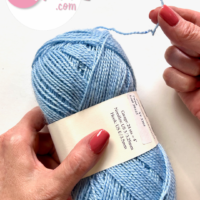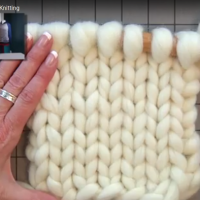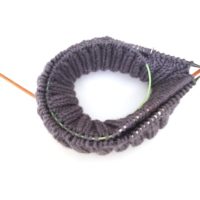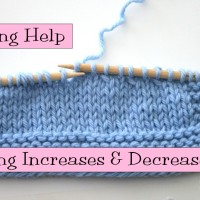“How do I block this?” That’s the knitting question I get more than any other. So, here we go…
The situation – you have finished knitting, seaming, and weaving in the ends. Now you’re ready to block the piece, which will transform your caterpillar knitting into a beautiful butterfly. This is also how you will hand wash your knitting every time it needs it.
Before we start, are you working with multiple yarn colors? Stripes, borders, fair isle, etc? If so, there is a chance that the dyes will bleed when they get wet, so you want to set the dyes before you follow the instructions below. Fill the sink with cold water and about a cup of white vinegar. Soak your knitting for about a half-hour, and rinse to get out the pickle smell. You can move on to blocking while it’s still wet, no prob.
Step 1:

Clean sink.
Step 2:

Fill with lukewarm water and add wool wash. I prefer the wool washes that don’t require rinsing, like Eucalan or Soak.
Step 3:

Send your knitting for a swim. Give it a few good squeezes to work the wool wash into the fibers.
Step 4:

Go find something else to do for a half-hour or so while it soaks.
Step 5:

Drain the sink, and gently squeeze out the excess water.
Step 6:

Spread an old towel out on the floor. (I recommend an old towel, because there still may be some color bleeding.) Gently lay the knitted piece out on the towel, being careful not to allow the weight of the piece to stretch it out while it’s wet and heavy.
Step 7:

Roll-up your knitting inside the towel like a burrito.
Step 8:

Step all over it. Give it a quarter turn, step all over it again. This is a way of squishing out the extra water without wringing. Note: do not do this in stocking feet. Ask me how I know this.*
Step 9:

Blocking boards are awesome, but not totally necessary. Find a place for your knitting to dry WHERE YOUR PETS CANNOT GO. That’s the only steadfast rule. You can ask me how I know this tidbit, too.** Spread out your knitting to measurements, and pin if necessary. Bonus if there is a ceiling fan in the room.
The piece will dry exactly as you shape it, so be sure to square-out the corners and smooth the stitches. If you’re blocking something that is double-thick (like a sweater), flip it over once the top side is dry.
More notes:
– Since you, my friend, are a careful and smart knitter, you knit and blocked a swatch before you started knitting, right? That means there won’t be any nasty surprises like out-of-control stretching when the piece gets wet. Good for you!
– I have found superwash wool to be the most unpredictable fiber when it comes to blocking. Be SURE to block your swatch.
– These instructions are primarily for wool, but you can use them to block any fiber.
– Like I said, you’ll use these instructions every time you hand wash your knitting, which sounds like a lot of work. The truth is, wool doesn’t need washing all that often. I live in a warm climate, and I really only wash my wool sweaters once at the end of the cold season every year.
*I’ve ended up with wet socks more than once while stepping all over the towel burrito.
**When dogs and cats smell wet wool, they will be convinced that there is a rain-soaked sheep in the house. They will dig through your wet knitting, trying to find this tiny sheep.





Great post, Staci. Quick question – where did you get your blocking board? I’ve look in a few places and have only found cheap ones. Yours is much nice then the ones I have been able to find.
See you soon!
Tiny sheep. That’s a funny image. 🙂 Thanks for the smile.
Hi Kelly – I should have known to answer the blocking board question before you asked it, because I get that question a lot, too.
I got my blocking board on eBay, but I don’t see any listings for the good kind right now. Here is a link to a good one:
http://www.yarn.com/index.cfm/fuseaction/product.detail/_/Blocking-Board/productID/ebf1267e-57c1-4c95-8e58-c335c570ce2c/categoryID/5f761cd5-2dae-4672-acec-d2b56a5d2d70/?gclid=CPev1JzKjKMCFRxinAod5zYDmQ
Here’s what you want in a blocking board:
1. SPACE. Buy the biggest one you can find, the 33×51 size has a grid of 48×30 printed on it. I think that is the biggest available.
2. Buy a folding board with handles
3. Make sure you can pin into it
4. You want one with a printed grid
Hope that helps!
S t a c i
Once again you have come to the rescue. Thank you for taking the time to post all of your tips and tricks.
I just blocked a shawl and some socks, but when it came time to squeeze out the water, I placed each piece in my salad spinner. It only took a few cycles in there to get a good amount of the water out. Of course, I realize that doesn’t work with a lot of knits, just lacy things that are compressible and small knits like socks, gloves, mittens, hats, and scarves. Sweaters still need to be squeezed like crazy.
I had to buy a second salad spinner because my salad was getting linty. 🙂
Staci — I am getting ready to block my Big Bad Baby Blanket. I’ve never blocked anything before and am having mild anxiety over it, so this post is very helpful! 🙂 Anyway, I knit this blanket with Superwash yarn, and a lady on Ravelry told me I could just wash and dry it as instructed on the yarn and it should be fine. What are your thoughts on this? I kind of think blocking might be better to even out the stitches (they’re kind of wonky when it switches from knits to purls). Thanks!!
Carly
Thanks for this great tip — love the humorous bits you add!
Hi staci, I learned the entire knitting through your videos. I am enjoying knitting like anything. Thanks a lot!!!!! I am jus about to complete a little sweater for my six month old baby. So I have a question about blocking. I would like to know the importance of blocking and is it necessary to use only a wool wash? I mean I can’t use a normal detergent?
Hi Priya – blocking is important, but mainly for wool fibers or other animal fibers. It helps even out the stitches, and gets your knitted piece to the exact measurements it should be. If you are knitting something that is machine washable and dryable, you can probably get away with using detergent. Truth be told – I treat all of my handknits gently (using wool soap and handwashing), because of the amount of work that went into them!
Hope that helps!
S t a c i
How do you block things like hats?
I am going to knit a Central Park Hoodie with Brown Sheep Lamb’s Pride Worsted. I am nervous about the dye bleeding. The yarn label says something like ”Hand wash in cool water using Brown’s Top of the Lamb Shampoo and 1/8 cup of white vinegar. Rinse thoroughly – adding 1/8 cup of white vinegar to the last clear rinse. Roll gently in a towel to remove excess water (do not twist or wring), and lay flat to dry. Press with cool iron, if needed.” I will make a gauge swatch and try this vinegar/wool wash thing out, but is the white vinegar for the first wash/blocking only?
Tahirra – you may want to contact the company with this question. But in my experience, yes, you only need to use vinegar on the first washing to set the dye.
S t a c i
How do you block knitted animals? I´ve got some patterns and they didn´t say a thing about blocking…
Elena – you can block the knitting before you stuff the animal, I suppose. I don’t have much experience with knitted animals – you may get a better answer from someone who specializes in knit toys.
S t a c i
I just found you a few months ago and I love you website and videos. My question is how do you hold your working yarn in your right hand? Do you just wrap it around your index finder and leave it loose or do you hold it in your hand?
Tina – I just hold the yarn between my ring finger/pinky and palm, like in a fist. I don’t wrap the yarn around any of my fingers for tension. Here is a video that explains how I knit:
http://youtu.be/y547Q5Hjcuo
S t a c i
3?s. Any suggestions on how to block very large pieces that exceed the size of your blocking board?
Do you also block items made entirely of man made fibers
If not, at what percentage do you block? that is, 10% wool doesn’t need blocking but 50% does! for ex.
Elizabeth – if you’re blocking something that is too big for the blocking board, you just make it work. I usually just put my blocking board on my king-sized bed, and allow the piece to extend past the blocking board on to the bed, as it will.
When it comes to man-made fibers, I follow the washing instructions on the yarn label, which don’t usually require hand washing and setting out flat to dry.
S t a c i
Hey Staci, thanks a lot for the instructions. I just have a question, I have a multicolored project I want to felt and the colors of my swatch already bled in the washing machine. Do you think the vinegar would help prevent the color bleeding or is there anything else I can do? Thanks!!
Athina
Hi Athina – vinegar and very cold water is what I would do myself!
S t a c i
What a wonderful find this was. I am not one to “favorite” very many sites but this I will. Thank you for such generosity. Reading comments was also informational.
Beckie
I’m trying to do a 10-stitch blanket (Your videos have helped with the corners, but for some reason, the straight/reattach thing is whereI’m stuck — I’m still in practice-yarn, so I’m trying again). Anyhow, since I’m browsing all over your site, learning a lot, I’m anticipating at one point I will solve any blanket issues and then finish it. (I’m using Plymouth Gina yarn – 100% wool with colorways like a Noro yarn.) I’m making it for our size bed – there is no floor space in our house as big as the blanket will be. Suggestions on blocking huge things? Do I take over a conference table at work and hope no one notices for however long it takes to dry?
April – for really large items that need to dry flat, you have to just find the space for it! For big blankets, I handwash them in the bathtub, then put them into my top-loading washer and set it to the “spin” cycle to remove most of the water. Then I put a sheet down on my bed, spread out the blanket, and turn on the ceiling fan. Depending on humidity, it usually only takes a few hours, especially if you flip it once the top side is dry.
S t a c i
Hi Staci, I have a couple of questions if you have time to answer related to some of the things you mention here. Can you tell me why you work the “wool wash” soap into the yarn? What does it do to the yarn? This is better than just a water soak? My other question is where you mentioned the most unpredictable is superwash yarn. Can you tell me what that is? What they do to the yarn? I just purchased some relatively inexpensive superwash from a popular website, but have also seen some higher quality yarn offered in superwash. If you had a choice would you stay away from the superwash? Thank you,
Michelle
Michelle – wool wash cleans the item, helps plump up the stitches, and conditions the knit.
You can Google how superwash yarn is made – sorry I can’t go into all of that! Superwash yarn is a good option, no need to shy away from it. Just make sure you wash and block your swatch before you start your project.
S t a c i
Hi Staci, Will these items need to be blocked every time they are washed? I’m wondering, specifically, about socks that I’d like to give as gifts. Thanks for ALL the help you’ve given me!
Barbara – depends. You’ll need to take a look at the washing instructions on the yarn label. Things that are 100% animal fiber (like wool sweaters) will need to be blocked every time they are washed. (Luckily, wool doesn’t need to be washed all that often.) Cotton and synthetic items can often be machine washed and dried. Superwash socks can be washed in the washer and set out flat to dry.
S t a c i
Thanks, Staci! Lucky for me, the yarn I have is 75% Superwash Wool and 25% nylon.
Hi Staci!
Do you recommend blocking socks with sock blockers? This is all new to me.
Thank you,
Michelle
Michelle – there is no need to use sock blockers, unless you’re giving the socks as a gift, and you want them to look really good when the gift is opened. You can just set socks out flat to dry without any blockers.
S t a c i
Hi Stacy,
I am fairly new to knitting. I am working on my first project of drop down shoulder sweater for 2 yr old. I am working with rowan superwash wool. Ok my question is should I block the sweater pieces before sewing them together? I finished knitting front and back,its all coiled up. I am bit anxious to pick up stitches on uneven ends. So I was wondering how many times do i block? What would you suggest before seaming or after seaming the pieces.
I appreciate all the effort you put in your tutorials. It’s very encouraging. Thank you for introducing a whole new world to explore.
Best wishes
Roopa.
Roopa – I recommend steam blocking before seaming, then wet blocking after seaming. This video will help you with steam blocking:
https://verypink.com/2012/11/21/steam-blocking/
S t a c i
Thank you very much Staci. Its a great video just what I was looking for. Wonder how I missed it 🙂 I love all your videos they are to the point and very helpful. I am excited to start my next project from your tutorials – raglan for toddler. Once again thank you for the prompt reply.
Great post. I love learning from you and enjoy your sense of humor a lot.
Thanks
Yael
Hi Staci,
It’s time to make some Christmas gift, but how can I block gloves, mitts, fingerless and other thing like that ?
Thanks.
Claire
Claire – just set these items out flat to dry, and when one side is dry, flip them over to allow the other side to dry.
S t a c i